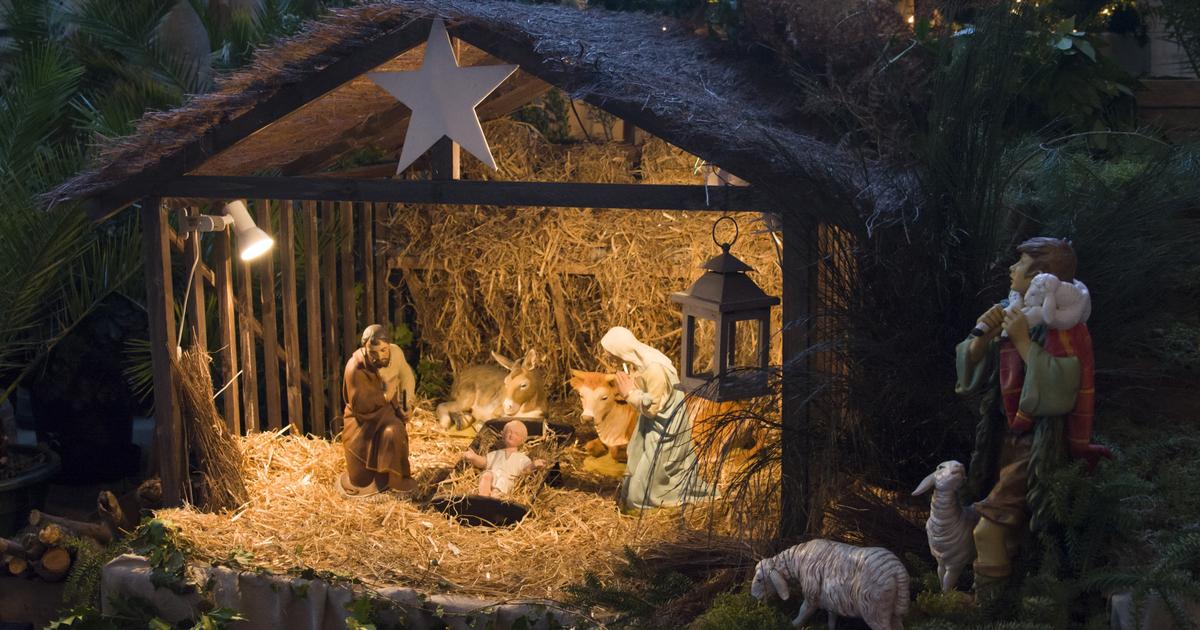Gautier Jardon is a research officer at Ifop. He has just published astudy for La Vie on the French and Christmas nativity scenes.
LE FIGARO. – More than two out of five French people (41%) still set up a nativity scene in their home in the run-up to Christmas. Is this a sign of the resilience of a popular Catholicism despite the secularization of society?
Gautier JARDON. – This practice has become a minority, whereas it was carried out by two-thirds of French people in their childhood (69%). It is therefore a declining use. Nevertheless, and a fortiori in the context of de-Christianization that France is currently experiencing, this 41% remains a significant part of the population. We can therefore indeed speak of the 'resilience' of this custom of setting up a nativity scene, mainly for traditional and cultural reasons.
The nativity scene seems to remain a rather well-established tradition in France, much more than other religious symbols: in 2020, only 17% of French people kept a crucifix at home. Does the nativity scene survive as a cultural object rather than as a religious symbol?
For some, the nativity scene retains a religious significance, especially among practitioners, but if it is still present in a large number of French homes, it is indeed for its cultural aspect. In fact, more than half of non-practising Catholics (53%) say they still install them today. However, this is a population that has a much more distanced relationship with most objects with religious connotations, with less than a third owning, for example, a Bible, a rosary or a crucifix. Non-practising Catholics generally retain a strong attachment to all things cultural and traditional. Today, the nativity scene is an object of nostalgia and traditional know-how that still seduces this population that has moved away from religious practice but not from its customs.
Read alsoThese killjoys who hate gifts
The crèche is seen as a way of transmitting the faith by the youngest who install it (72% of 18-35 year olds), much more than among their elders (56% of those aged 50 and over). Is there a return of identity affirmation among Catholics?
What emerges from the study is that while the nativity scene is considered a traditional object with little religious impact by the older generations, it is more of a marker among young Catholics. While once coming out as Catholic was the norm, it has become a little less trivial for those who have grown up in the last few decades, even through the installation of a decoration like a nativity scene. However, I would not necessarily go so far as to speak of an affirmation of identity among these young Catholics, because setting up a crèche in one's home is a private matter. Simply, the inner meaning is more often religious among these younger generations than among their elders, among whom having a nativity scene at home is more "normalized", common.
Conflicts are recurrent around the installation of crèches in public places, denounced as an attack on secularism. What meaning do the French give to the crèche when they still install it?
In 2014, following one of these controversies, an Ifop study measured that more than two-thirds of French people (71%) were rather in favour of the presence of nativity scenes in public places because in their eyes it was more an element of cultural tradition than a Christian symbol. The climate on secularism has since become even more tense than it was at the time, but it can be assumed that today a majority of French people still see nativity scenes as a traditional decoration without much danger for secularism.
For a majority (63%), the installation of the nativity scene is also an opportunity to transmit elements of faith in the family.
Gautier Jardon
Our latest study focuses on setting up a crèche at home, so it is more intimate and private. Of those who install them in their homes, a majority say they do so first because it is a family tradition (64%). For three-quarters of non-practising Catholics, this is by far the main reason (76%). On the other hand, this is only the case for 38% of practitioners, 52% of whom see it as a place of prayer with a religious dimension. Having a place of prayer in one's home, however, signals the desire to devote oneself to an interior practice that does not necessarily prejudge a desire to proselytize or a rejection of secularism.
50% of households with children set up a crèche while only 37% of households without children do the same. Is the installation of the nativity scene still a family ritual?
In any case, it is a rite that is more practiced in homes with children, regardless of the level of family religious practice. For nearly a third (31%) of French people setting up a crèche, one of the driving intentions of this practice is to carry out an activity with the children. For a majority (63%), the installation of the nativity scene is also an opportunity to transmit elements of faith in the family. And this is not reserved for the most religious households, since it is also the case for 59% of non-practicing Catholics.

